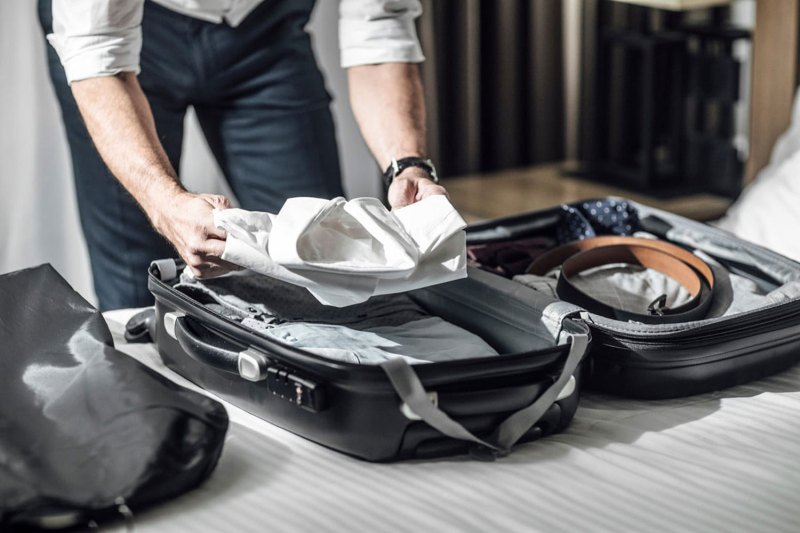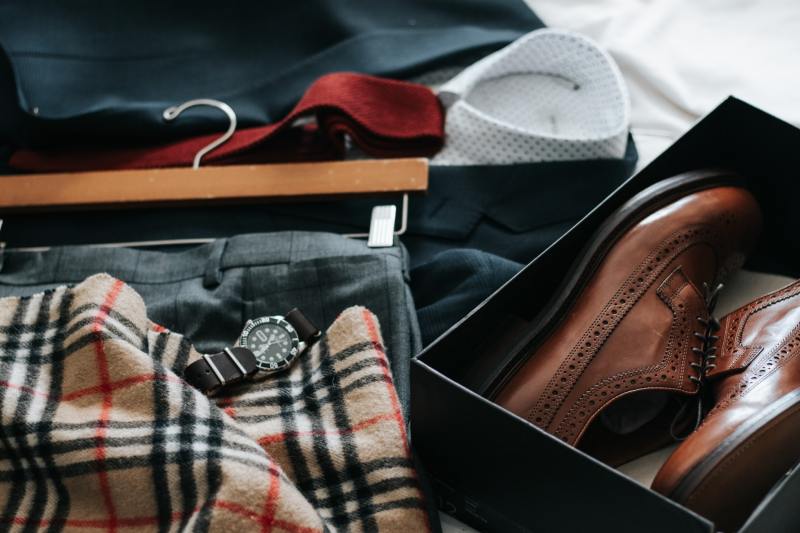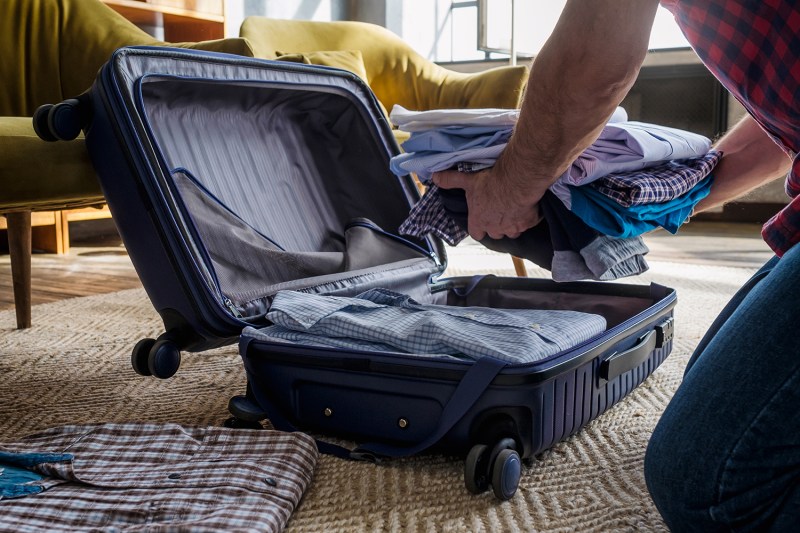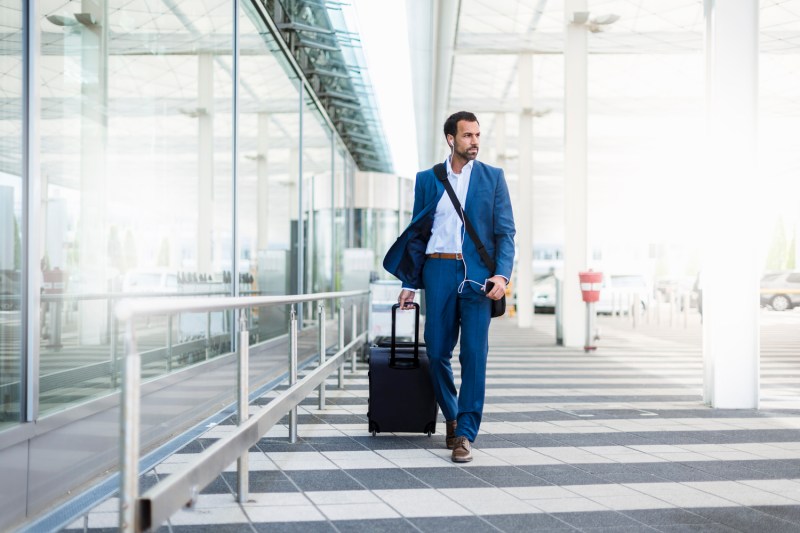Travel can be stressful at the best of times, and it's made worse when you're trying to leave multiple huge, heavy bags around with you. If you're going on a trip, learning to pack efficiently and to bring just the essentials on the plane with you will make your trip smoother and more pleasant. You'll also save on the increasingly costly fees for checked bags or carry-on luggage that many airlines now charge.
However, packing gets more tricky when you're trying to bring smart clothing like a suit with you, such as if you're heading to a conference for work or to a special event like a wedding. You might be able to scrunch up a couple of t-shirts into a ball and toss them into a bag, but you don't want to take the same approach to your suits. If you need to travel light and pack a suit, however, it is possible to do that and save yourself both hassle and expense.
It does take a bit of time before you learn how to pack for your travels in a convenient way, maybe even need a helpful guide in order to get you started. Lucky for you, we've gathered the five best ways to take a suit with you on a short trip. Take your pick of the method that works best for you and never have to stress about that part of traveling again.

Fold it down, pack it away
Assuming you're traveling with carry-on luggage, the kind that will fit into most overhead bins, you're going to be able to pack a suit with relative ease.
Step 1: Fold the suit in half along its back axis so that its shoulders are touching. The trick to making sure it arrives relatively wrinkle-free, however, is to follow the lines of the suit, meaning its seams and sleeves.
Step 2: Fold one-half of the jacket inside out so that the liner is exposed.
Step 3: Make sure both sleeves are smooth and flat and then fold the jacket in half over your forearm. It will now be in a slender, rectangular package ready to be laid down in your bag.
Step 4: Smooth your suit pants, fold them in half, fold them again, then put them on top of the jacket. All done!

Roll it up
Sure, you could buy a fancy suit roller bag and save yourself some time, but there's really no need for such a specific accessory. But it's easy to roll up your suit for compact, efficient travel without the need for any additional travel luggage. And that's kind of the point here anyway.
Step 1: The secret to the rolling technique is to make sure your suit is folded in half across all its natural seams and with its sleeves as flat as can be.
Step 2: Next, find something roughly tubular around which to roll the suit. Ideally, use a pair of non-dress pants for this, as any garment rolled tightly will wrinkle. Use your best jeans to make the central tube, for example, then carefully roll your suit jacket around them. Follow that with your suit pants.
Step 3: Tuck everything into a t-shirt and secure the bundle with a belt, or just stow it in a bag. This tube of clothing should easily fit in most backpacks.

Send it in the mail
Strange as it is to believe, it's much cheaper to send a Priority Box via the United States Postal Service than it is to check a bag with most airlines.
Step 1: Plan ahead by about three days and mail your suit to your hotel.
Step 2: Pack it using the same process as outlined in the fold it down method, tuck the suit into a large Priority Box, and send it along for cheaper than what the airline would charge.

Just wear it
If you need to bring a suit along for your travels, one way to keep it in relatively good shape is to just wear the thing while you're on the plane. Change at the airport and shove your casual clothes into a bag, then as soon as you get off your flight, change again, draping your suit over your shoulder on a hanger. Your slacks and blazer will be fine for a few hours on your person without looking soiled, especially if you're just sitting there in your seat.

Use a traditional suit bag
Packing a suit bag is intuitive enough that you don't need step-by-step instructions. Why isn't this the first option, though? A suit bag will only protect your slacks and blazer if the bag itself is properly handled. Once it's stuffed into a bin or crushed under another bag, there goes all your proper planning.
Step 1: Politely ask the flight attendants if they'll let you hang your suit bag in that handy storage closet near the front of the plane.
Step 2: If that doesn't work, carefully slide your unfolded suit bag atop other passengers' roll-aboard luggage.
Step 3: As a last resort, after takeoff, retrieve your folded-up suit bag from the overhead bin or from under the seat in front of you and unfurl it across your lap and knees.
How to travel with multiple suits
For some events like work conferences or travel to different climates, you might need to pack more than one suit. In this case, think carefully about which suit to wear and which ones to pack.
Step 1: It's a good idea to wear a lightweight suit for travel — something like linen is very comfortable to wear and creases in an elegant rather than a rumpled way, so that's always a good choice for a travel outfit — and carry other, heavier wool suits in a garment bag. Wool doesn't crease as easily as other fabrics and you can get any minor creases out when you arrive by hanging the suit up in your bathroom while you take a shower as the steam will help the fabric to relax.
Step 2: If you're going to travel with multiple suits then investing in a garment bag will make your life much easier. You can find garment bags with plenty of pockets so you might even be able to fit all your clothes and accessories for a trip into one garment bag and one carry-on bag, which will help you travel light. Hard shelled suitcases may not be necessary for a work trip and you can save yourself the extra fees from the airline and extra weight from heaving around a large bag by using a soft garment bag instead.
Step 3: The real difficulty when packing multiple suits is generally not the suits themselves but the multiple pairs of shoes you might need to go with each suit. Shoes are bulky and annoying to pack, and if you let them bounce around in your garment bag or suitcase they will cause bad creasing, not to mention getting your suits dirty. Always put your shoes into their own bag — even a plastic bag will do — and put them in your carry-on bag instead of in with your suits to keep everything neat.
The next time you have to take a quick, last-minute trip, or you're just really struggling with designating space in your luggage, look over our tips for how to pack your suit. Not only will your suit arrive in one piece, but you'll be able to wear it without needing to get it pressed.




